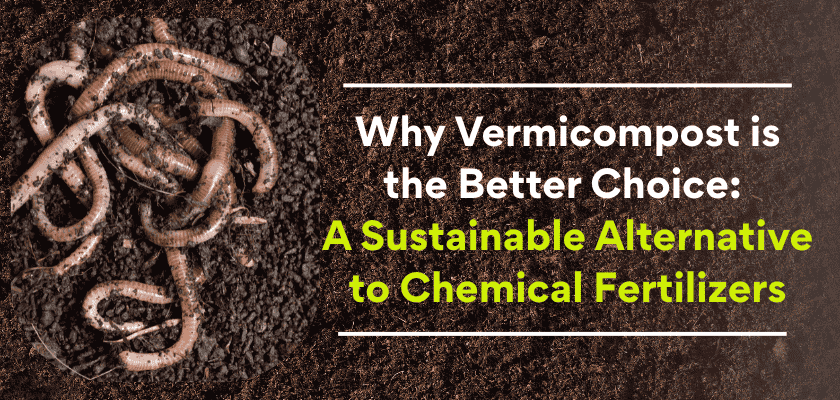
Biocontrol agents play a significant role today. The facts are clear – we need to boost global food production by 70% by 2050 to feed everyone. Chemical pesticides seemed like the answer at first. Now they create more issues than solutions, while plant pathogens cause $40 billion in losses worldwide each year.
The current farming methods lead to 60% of biodiversity loss and 25% of greenhouse gas emissions. But scientists have found that biocontrol provides an environmentally responsible alternative. Our experience shows that microbial biological control agents help manage plant diseases and boost plant growth effectively.
Let’s take a closer look at expert-tested biocontrol solutions that protect soil health without harming the environment. You’ll learn about bacterial allies like PGPR and fungal champions like Trichoderma. These natural defenders can revolutionize your pest management strategy and improve your soil’s health.
Understanding Biocontrol Agents for Soil Health
Nature provides powerful ways to protect our crops and soil. Chemical solutions aren’t always the answer when nature gives us dynamic defenders that work in harmony with ecosystems. These remarkable allies deserve our attention.
What are biocontrol agents?
Living organisms or their derivatives make up biocontrol agents that help manage pest populations naturally. They act as nature’s own defense system against harmful pests and pathogens. These biological protectors come in several forms: macrobials (insects, mites, nematodes), microbials (bacteria, fungi, viruses), semiochemicals (signaling compounds), and natural substances extracted from plants or minerals.
Biocontrol agents don’t work like regular pesticides. They use ecological relationships that nature has perfected over thousands of years. These agents parasitize pests, create antibiotic compounds, compete for resources and space, or activate the plant’s natural defense mechanisms. The market shows growing enthusiasm for these solutions. Experts predict the global biopesticide market will reach USD 4556.37 million by 2019, with a remarkable 15.30% yearly growth from 2014 to 2019.
The science behind natural pest management
Complex ecological interactions power biocontrol systems. Soil bacteria and fungi serve as natural guardians that produce antimicrobial compounds to stop pathogens. To cite an instance, Bacillus subtilis helps curb diseases like powdery mildew, while specific Bacillus thuringiensis strains target caterpillars and beetles.
Beneficial microbes trigger two main plant defense responses: systemic acquired resistance (SAR) and induced systemic resistance (ISR). These responses act like vaccines that protect plants from future attacks. The biocontrol agents also physically compete with pathogens for space and nutrients in the rhizosphere—the soil area around plant roots.
Benefits over chemical alternatives
Biocontrol brings several advantages compared to chemical pesticides:
- Environmental safety: These agents reduce soil, water, and air pollution substantially while protecting beneficial organisms.
- Long-term sustainability: Unlike chemicals that create resistant pests, biocontrol populations sustain themselves and provide lasting protection.
- Economic efficiency: Higher upfront costs lead to lower production expenses over time, making these solutions economical in the long run.
- Targeted specificity: Natural enemies often attack specific pest species, which helps preserve beneficial organisms and maintain nature’s balance.
Farmers who use biocontrol among other practices like cover cropping and conservation tillage save much money per acre while solving many pest problems. Some regions have managed to keep crops healthy without fungicides for nine years in peanuts and without insecticides for 11 years in cotton.
Microbial Heroes: Bacteria as Biocontrol Agents
Bacteria act as microscopic powerhouses in soil biocontrol. These tiny organisms defend plants through sophisticated mechanisms and pack an impressive punch against plant pathogens. They promote plant growth at the same time.
Bacillus species and their superpowers
Bacillus species excel as biocontrol champions because they can form endospores that help them survive harsh environments. These bacteria create an impressive arsenal of antimicrobial compounds, such as lipopeptides, polyketides, and volatile organic compounds that stop pathogens directly. Bacillus subtilis creates biofilms on plant roots that act as protective barriers against invaders. On top of that, it triggers induced systemic resistance (ISR) in plants. This process works like a vaccine against multiple diseases by activating salicylic acid, jasmonic acid, and ethylene signaling pathways.
Pseudomonas: The versatile defenders
Pseudomonas species, especially fluorescent pseudomonads, serve as adaptable defenders in the soil ecosystem. These bacteria make powerful antibiotics like phenazine-1-carboxamide and 2,4-diacetylphloroglucinol that suppress various pathogens effectively. Pseudomonas strains do more than just fight pathogens. They convert atmospheric nitrogen into forms plants can use and make phosphorus available, which helps with both plant protection and nutrition. P. fluorescens strengthens plant defense mechanisms by producing hydrogen cyanide and hydrolytic enzymes that break down pathogen cell walls.
Actinobacteria for disease suppression
Streptomyces species lead the Actinobacteria group as prolific producers of antimicrobial compounds. They account for about 60% of antibiotics important to agriculture. These filamentous bacteria release chitinases, glucanases, and proteases that break down pathogen cell structures directly. Some Actinobacteria strains boost induced systemic resistance in plants, which helps them respond faster to pathogen attacks.
Application methods for bacterial biocontrol
The quickest way to use bacterial agents involves getting them to their targets so they can establish successfully. Farmers can apply bacterial biocontrol agents as seed treatments, soil drenches, foliar sprays, or root dips. The best results come when application timing lines up with crop phenology and pathogen life cycles. Single-strain applications work well, but research shows that bacterial consortia create stable rhizosphere communities that give more complete disease control.
Fungal Allies in Soil Protection
Fungi have built amazing relationships with plants and soil. These underground allies protect plants better than bacteria alone through complex partnerships that work well for both sides.
Trichoderma: The multi-talented fungus
Trichoderma species stand out as versatile biocontrol champions that manage soil-borne pathogens in several ways. These helpful fungi make bioactive substances to stop harmful organisms. They also break down organic matter to make nutrients more available. Trichoderma gets more and thus encourages more plant growth by releasing growth hormones like indoleacetic acid (IAA). When farmers use Trichoderma after soil fumigation, crop yields soar—cucumber yields jump up to 35.6%—while achieving 99% success against soil-borne pathogens.
![]()
Mycorrhizal fungi and their symbiotic benefits
Mycorrhizal fungi are the foundations of plant partnerships. They team up with over 90% of land plant species. These amazing organisms build vast underground networks (the “wood-wide web”) that link whole plant communities and let them share nutrients. Their fungal network can reach 700 times more soil than plant roots alone. Plants give carbon compounds to these fungi, and in return, the fungi deliver vital nutrients—up to 90% of a plant’s phosphorus and nitrogen comes from these fungal allies.
Beauveria and other insect-controlling fungi
Beauveria bassiana works in two ways by controlling both insect pests and certain plant diseases. Unlike bacterial pesticides that insects must eat, Beauveria spores break through an insect’s exterior and produce toxins that kill the host. Research showed 94% of pyrethroid-resistant bed bugs died after treatment with commercial Beauveria products.
How to introduce beneficial fungi to your soil
You need the right methods to add fungal biocontrol agents successfully. Mycorrhizal fungi work best when you add powder or granules directly to planting holes where they touch the roots. Seed treatments are perfect for Trichoderma—you only need about ½ oz per acre to protect plants all season. Just remember not to use fungicides within 24 hours of applying Beauveria. Your soil ecosystem’s beneficial fungal populations grow naturally when you add organic matter through composting and mulching.
Advanced Biocontrol Strategies for Complex Problems
Single biocontrol approaches don’t provide complete protection against complex pest challenges. You’ll get better results with advanced strategies that use synergistic relationships between multiple agents and integrate them with cultural practices. These offer more effective, eco-friendly solutions.
Combining multiple biocontrol agents
Biocontrol science shows that combination approaches work better than using just one method. Multi-strain biological control agents (MSBCAs) show better results through diverse defense mechanisms and their ability to occupy different ecological niches. These microbial teams work together naturally. Research indicates that MSBCAs protect plants better than single strains. They improve rhizosphere colonization and create stable soil communities.
To cite an instance, see how combining Trichoderma harzianum with Pseudomonas fluorescens and carbendazim worked better against rice pathogens compared to using them separately. Scientists found another winning approach by pairing bacterial biocontrol agents with reduced doses of fungicides. A mix of fungicide-resistant Trichoderma with various systemic fungicides at just 50-100 ppm boosted the control of fruit rot.
Integrating biocontrol with cultural practices
You can tap into the full potential of biocontrol by embedding it within broader management systems. Biologically integrated farming recognizes and boosts natural relationships within farm systems. This reduces chemical inputs while keeping productivity high. The method includes cover cropping, leaf nitrogen monitoring, and pheromone disruption technologies.
Conservation biocontrol offers another powerful integration strategy. It boosts indigenous predators and parasitoids through careful habitat manipulation. Natural enemy populations thrive when you create overwintering refuges (like “beetle banks”), provide flowering plants, and maintain vegetation diversity. European fruit orchards saw great success with these strategies. They helped bring back natural enemy fauna.
Tailoring solutions for specific crops and regions
Cookie-cutter approaches rarely work in a variety of growing conditions. Effective biocontrol needs customization based on:
- Climatic matching – Temperature and moisture requirements determine which biocontrol agents work in specific regions
- Regional adaptation – Methods that work in one area often need adjusting for different environments, as shown in S. noctilio control efforts in South Africa
- Innovative delivery systems – Modern drone technology helps detect invasive plants and precisely deploy biocontrol agents in hard-to-reach areas
Smart decision-making tailored to specific contexts leads to successful biocontrol implementation. Koppert’s researchers showed through European field trials that protocols must factor in formulation, application techniques, and ROI calculations unique to each grower’s operation.
Conclusion
Biocontrol agents are nature’s answer to green agriculture. powerful solutions for pest management and protect our environment. Our largest longitudinal study and field experience show how bacterial champions like Bacillus and Pseudomonas work with fungal allies such as Trichoderma to build strong defense systems against crop threats.
Successful biocontrol just needs a complete approach, not single solutions. Farmers get better results when they combine multiple agents with targeted cultural practices instead of isolated treatments. Field studies prove that farmers who adopt these integrated strategies cut pest control costs substantially while their crop yields stay strong or improve.
These natural defenders shape agriculture’s future. Setting up biocontrol systems takes careful planning and local conditions matter, but the long-term benefits are nowhere near as challenging as the original setup. Biocontrol agents are vital tools for modern farming because they reduce chemical dependency, improve soil health, and protect crops sustainably.
Note that success starts when you understand your specific context and pick the right combinations of biocontrol agents. These natural solutions are a great way to get healthy, productive soil, whether you manage small gardens or large agricultural operations.



